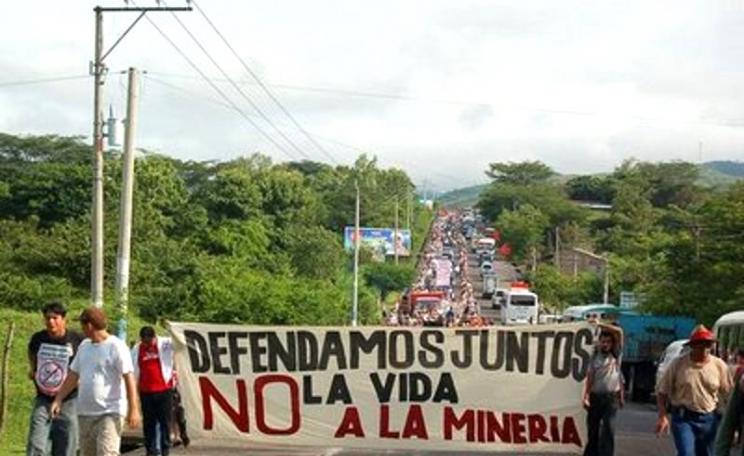"It is better to light one candle than to curse the darkness" Image: book cover of Paths Are Made By Walking.
Those who seek a just and peaceful world are continuing to find imaginative and creative ways of moving beyond peaceful protest
In 2013 it is hard to recall the level of fear that gripped people thirty years ago at the height of the Cold War. The prospect of nuclear holocaust was very tangible, and for many people it seemed inevitable, only a matter of time. In 1984 a group of international scientists had declared the doomsday clock stood at three minutes to midnight. The arms race was spiralling, fuelled by paranoia. The theory of deterrence was called MAD – Mutually Assured Destruction.
In the early eighties we worked for a small, independent film distributor called Concord Films. One of the films Concord distributed was the War Game. Made in 1965 by Peter Watkins for the BBC, the War Game was not shown because the Corporation said "the effect of the film has been judged by the BBC to be too horrifying for the medium of broadcasting". But in the days before video and DVD Concord despatched 16mm prints of the film to schools, colleges and community groups, and it was widely shown throughout the country.
In 1981 it was announced that American ground launched Cruse missiles would be based in the United Kingdom. Opposition to this escalation in the arms race was swift. Many people understood that the presence of these weapons on British soil made the country a first strike target. The missiles were to be based at Greenham Common in Berkshire and Molesworth in Cambridgeshire. Peace camps were set up at both bases. By 1984 the women only camp at Greenham was receiving national media attention. Non Violent Direct Action (NVDA) at Molesworth was developing a different form.
Molesworth was an open site, a former base, unfenced and largely waste land. It was decided to carry out a symbolic action that would carry the message “Bread not Bombs”. This was done by ploughing up the fields and planting wheat. Food was badly needed in war torn Ethiopia, better to feed the hungry than spend money on nuclear weapons. At the same time, the peace witness was enhanced by construction of a small peace chapel, Eirene. Built from rubble from the base, the half completed Eirene was blessed by the Bishop of Huntingdon.
We were moved and impressed by what was happening at Molesworth and made plans to join the growing numbers who were now camped on the base. In January 1985 we bought an old caravan and had it delivered by low loader to the peace camp known as Rainbow Village. On the night of February 5th the Ministry of Defence brought hundreds of police and military under cover of darkness and swiftly fenced in the base with rolls of barbed wire. Rainbow village, men, women and children, together with a few goats were evicted and escorted away. Our caravan was left, just outside the perimeter near the fenced-in peace chapel. Our book Paths are Made by Walking describes what happens next.
Those who seek a just and peaceful world are continuing to find imaginative and creative ways of moving beyond peaceful protest
We came to recognise the truth of some words of Thomas Merton, written to a peace activist during the Vietnam War. He wrote:
Do not depend on the hope of results… As you get used to this idea, you start more and more to concentrate not on the results but on the value, the rightness, the truth of the work itself. And there too a great deal has to be gone through, as gradually you struggle less and less for an idea and more and more for specific people. The range tends to narrow down, but it gets much more real. In the end, it is the reality of personal relationships that saves everything.*
After the fall of the Berlin Wall the doomsday clock shifted further from Armageddon but now it is once again moving closer to midnight. Terrorism and nuclear proliferation together with the understanding of the catastrophic consequences of climate change has increased the threat level facing the planet. NVDA continues to be employed by those who struggle for justice and peace.
On the 27th April (2013) hundreds protested at RAF Waddington in Lincolnshire. They were there because of a recent decision to move the control base of unarmed drones from Nevada to the United Kingdom. The armed drones are used in Afghanistan. One of the organisers is quoted by the Guardian as saying;
"Drones, controlled far away from conflict zones, ease politicians' decisions to launch military strikes and order extrajudicial assassinations, without democratic oversight or accountability to the public. Now is the time to ban killer drones - before it is too late."
War on Want senior campaigns officer for militarism and security, Rafeef Ziadah
A new generation is discovering the value and power of non-violence. Symbolic protests like the Salt March in India and the Bus boycott in the United States offer examples of the way change can be brought about peacefully. Those who seek a just and peaceful world are continuing to find imaginative and creative ways of moving beyond peaceful protest, so that the transforming power of non-violence can be released to change hearts and minds.
Jennifer and Ian Hartley moved to Molesworth in 1985. In 1987 Ian went on to work for Mind in Suffolk where he became chief executive, retiring in 2006. Jennifer trained and worked as a GP counsellor for several years. Last year they were able to finance the self-publication of the book they wrote 27 years ago which they believe is still relevant today.
Paths are Made by Walking (paperback £8.99, ISBN 978-178035-552-8) is available to order directly online from Fast Print Publishing
*Thomas Merton’s Struggle with Peacemaking: James H Forest in Thomas Merton: Prophet in the Belly of a Paradox, edited by Gerald Twomey, Paulist Press, New York, 1978
| READ MORE... | |
 |
SPECIAL CONTENT CASE STUDY: on the frontline of climate activism In a heart-racing extract from her new book, Tamsin Omond gives a first-hand account of a diverse, but peaceful group of Climate Camp protesters bonding together when confronted by aggressive riot police |
 |
COMMENT Youth driving the environmental movement 'We're here because our parents' generation has failed us and it's up to young people to stop climate change by whatever peaceful means we have left.' |
 |
SPECIAL CONTENT CAMPAIGN HERO: Khushi Kabir, empowering Bangladesh's most vulnerable Khushi Kabir was nominated for the Nobel Peace Prize in 2005 for her work at Nijera Kori, which has helped organise over 175,000 landless people in Bangladesh's rural areas since 1980 |
 |
REVIEW Small World Big Ideas A film-maker, a writer, a peace walker, a primatologist - these are just a few of the 11 activists who have contributed to a new book that claims there is an activist in us all. Edgar Vaid reviews Small World, Big Ideas.. |
 |
SPECIAL CONTENT Release your inner activist This is a call to action for each and every single one of you to discover your own inner activist. Turn inspiration into action, experience your own big idea and help create a more beautiful, just and sustainable world. |





